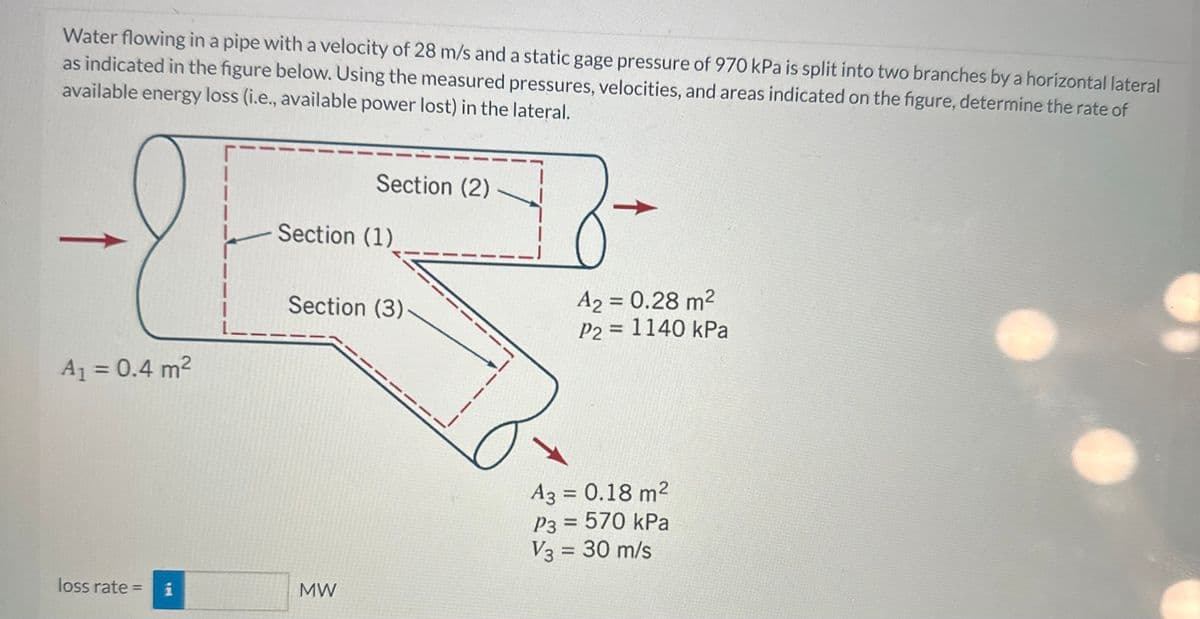Water flowing in a pipe with a velocity of 28 m/s and a static gage pressure of 970 kPa is split into two branches by a horizont as indicated in the figure below. Using the measured pressures, velocities, and areas indicated on the figure, determine the ra available energy loss (i.e., available power lost) in the lateral. A₁ = 0.4 m² Section (2) Section (1) Section (3). A2 = 0.28 m² P2 = 1140 kPa
Water flowing in a pipe with a velocity of 28 m/s and a static gage pressure of 970 kPa is split into two branches by a horizont as indicated in the figure below. Using the measured pressures, velocities, and areas indicated on the figure, determine the ra available energy loss (i.e., available power lost) in the lateral. A₁ = 0.4 m² Section (2) Section (1) Section (3). A2 = 0.28 m² P2 = 1140 kPa
Principles of Heat Transfer (Activate Learning with these NEW titles from Engineering!)
8th Edition
ISBN:9781305387102
Author:Kreith, Frank; Manglik, Raj M.
Publisher:Kreith, Frank; Manglik, Raj M.
Chapter6: Forced Convection Over Exterior Surfaces
Section: Chapter Questions
Problem 6.15P
Related questions
Question

Transcribed Image Text:Water flowing in a pipe with a velocity of 28 m/s and a static gage pressure of 970 kPa is split into two branches by a horizontal lateral
as indicated in the figure below. Using the measured pressures, velocities, and areas indicated on the figure, determine the rate of
available energy loss (i.e., available power lost) in the lateral.
2F
A₁ = 0.4 m²
loss rate=
i
Section (2)
Section (1)
Section (3)
MW
A2 = 0.28 m²
P2 = 1140 kPa
3
A3 = 0.18 m²
P3 = 570 kPa
V3 = 30 m/s
Expert Solution
This question has been solved!
Explore an expertly crafted, step-by-step solution for a thorough understanding of key concepts.
This is a popular solution!
Trending now
This is a popular solution!
Step by step
Solved in 4 steps with 9 images

Knowledge Booster
Learn more about
Need a deep-dive on the concept behind this application? Look no further. Learn more about this topic, mechanical-engineering and related others by exploring similar questions and additional content below.Recommended textbooks for you

Principles of Heat Transfer (Activate Learning wi…
Mechanical Engineering
ISBN:
9781305387102
Author:
Kreith, Frank; Manglik, Raj M.
Publisher:
Cengage Learning

Principles of Heat Transfer (Activate Learning wi…
Mechanical Engineering
ISBN:
9781305387102
Author:
Kreith, Frank; Manglik, Raj M.
Publisher:
Cengage Learning